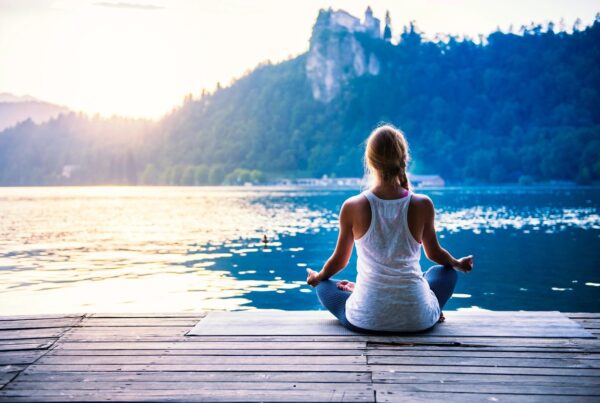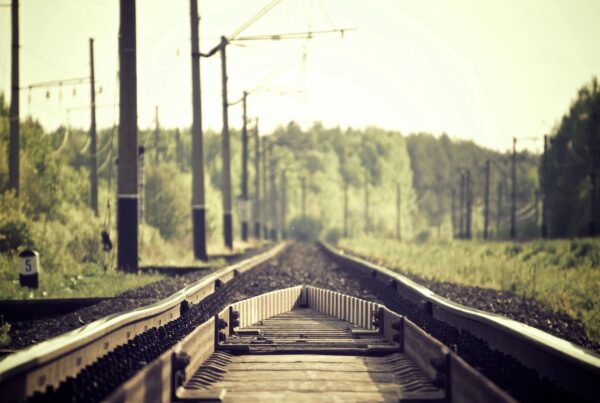How we respond to what’s going on right now in the world is determined by our view of evolution and how we understand the nature of consciousness. That some people live with a consciousness of only certain things evolving and others see all things as evolving is one example of a seeming consciousness divide that becomes even more pronounced in so many other examples.
Yet, this apparent divide represents opposite ends of an interconnected consciousness continuum within which all things are part of the same reality. At one end of this continuum, we live by principles that separate us, viewing the world with an unsustainable consciousness of duality. This perspective causes fear, bias, and prejudice, creates hierarchies and systems of injustice, distorts the way we relate to each other and the natural environment, and ends up in racism, oppression, and war, ultimately endangering our very survival.
Loosening our hold on the illusion of separation, we can move in the opposite direction along the same continuum, becoming more open to cooperation and harmony, while we head in a direction leading us to a consciousness of oneness, which becomes the basis for healthy relationships with each other and the planet.
 The further we move along this side of the consciousness continuum, the more we get the true picture of reality as it is. This holistic view of reality is built upon principles that engender respect, compassion, and equality. It does not let any of the parts become greater than the whole. Here, we see reality as one, and all of Creation as a unified whole, what the Buddha referred to when he said, “All things originate from one essence, develop according to one law, and are destined to one aim.”
The further we move along this side of the consciousness continuum, the more we get the true picture of reality as it is. This holistic view of reality is built upon principles that engender respect, compassion, and equality. It does not let any of the parts become greater than the whole. Here, we see reality as one, and all of Creation as a unified whole, what the Buddha referred to when he said, “All things originate from one essence, develop according to one law, and are destined to one aim.”
On this holistic side of the continuum, unity and wholeness become our primary perspective with which we see everything; we come to understand that the imperative of this moment is seeing each other as part of the same human family.
The evolutionary impulse itself moves across this continuum, leading humanity to greater levels of advancement toward human rights, gender equity, environmental, economic, social, and racial justice, all interconnected stepping-stones to peace.
There is a lot to dissuade us from even thinking that peace is possible based on where we are right now. But viewing consciousness as a continuum, and adopting a holistic vision of evolution, gives us the understanding that all life comes from the same source with its own direction and inherent purpose, and that evolution has its own developmental trajectory leading to the fulfillment of an inner potential. This gives us great hope for the future.
It also helps to understand that evolution in all realms is a gradual process of growth, but never a straight line. Evolution’s trajectory is not smooth, as we witness in this year of lockdowns, demonstrations, and confrontation. It is rather cyclical, with built-in ups and downs. The way to a consciousness of wholeness passes through many processes of transformation, with adversity being necessary for progress, and unity being the outcome of consciously confronting opposing forces.
In this holistic perspective, all things go through cycles of birth, growth, maturity, decline, and renewal. Common examples of this are the cycle of the seasons, the rise and fall of civilizations, and the cycle of spiritual epochs.
Humanity’s collective evolution includes periods of struggle and conflict that slow things down, but growth spurts follow those times. This holistic vision of evolution, accounting for cycles of progress and regress, means that, over centuries, evolutionary advancement can be seen going through various stages.
This cyclical process started long before human beings arrived on the planet. In the natural world of four billion years ago, cycles of renewal were the norm, with many life forms having gone through fits and starts, near-endings, and new beginnings.
The earliest indigenous peoples observed this pattern, incorporated it into all their rites of passage, and understood that all things are related and interdependent. They lived in harmony, intrinsically understanding that they are an integral part of the natural order around them; they lived life with an inherent consciousness of wholeness.

As societies became more complex, with different cultures and divergent beliefs, a series of spiritual epochs began, with each defined by this same cycle of birth, growth, maturity, and renewal that brought about by leaps in consciousness while the consciousness continuum became even wider at both extremes. Initiated by the world’s major prophets – Krishna, Abraham, Moses, Zoroaster, Buddha, Jesus, Muhammad, and Baha’u’llah – it’s difficult to deny that they have each changed the course of human life over the last five thousand years.
Previously, the Islamic Epoch, beginning some fourteen centuries ago, inaugurated humanity’s evolutionary stage of nation-building. With this completed, and just now in the springtime of a new spiritual epoch, the story of our time is characterized by the promise of what comes next.
A holistic vision, just emerging in this new phase of our collective evolution, acknowledges a purpose to these turbulent times, and demands, out of necessity for our own survival, that we reclaim our intended consciousness of oneness, already evident in emerging notions such as global economy, global consciousness, and world citizenship.
We are entering humanity’s stage of maturity, the natural outcome – and culmination – of where the evolutionary impulse has been leading us. The sacred story of our time is about the death of old systems that divide and the birth of a new global community that will unite humanity as one family.
A two-fold process of purging and reshaping humanity is underway. There may be further pain and strife during this period of global transformation, but this is what will finally bring the opposite extremes of the consciousness continuum into sharper focus. Our choice will become clear.
The vision of peace is like the promise of light at the end of a dark night. Except that coming dawn is up to us to usher into reality. A hidden potentiality within us awaits our activation. We have all the tools needed to fulfill this age-old promise; its realization depends wholly upon the action we all take now. To ensure that the rebirth of the planet happens as gently as possible, love is the sacred activism of our time; it is the unifying force that binds the universe together.
Nothing less than the entire world community working together in harmony will enable us to build the culture of oneness needed for our collective survival. We are at a threshold never before crossed. Our collective coming of age as a single people is at hand.
Our challenge is to disregard the fleeting notions of the day, recognize their sharp contrast to the overriding unifying forces of our time, and take the action most needed by each of us – to work across boundaries, across differences.
As greater numbers embrace the idea of global citizenship, as this is reflected in various spheres of action, from interpersonal to social, a consciousness of oneness will become as commonly accepted in the near future as nationalism was in the past, bringing us to the verge of world peace.
Adapted from The Story of Our Time: From Duality to Interconnectedness to Oneness
Robert Atkinson, PhD, is an educator, developmental psychologist, and author of his 2017 Nautilus Book Award winner The Story of Our Time: From Duality to Interconnectedness to Oneness.







